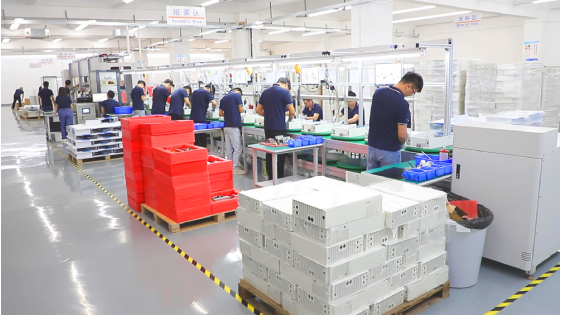A high-frequency inverter and a low-frequency inverter are two types of inverters used in electrical systems.
A high-frequency inverter operates at a high switching frequency, typically in the range of several kilohertz to tens of kilohertz. These inverters are smaller, lighter and more efficient than their low-frequency counterparts. They are commonly used in applications such as small electronic devices, laptops, smartphones and some solar installations.
On the other hand, a low-frequency inverter operates at a lower switching frequency, typically in the range of several hundred hertz. These inverters are larger and heavier, but have better power handling capabilities and operate more efficiently at higher power levels compared to high-frequency inverters. They are commonly used in applications such as residential and commercial solar power systems, renewable energy systems and backup power systems.
Both high and low-frequency inverters convert direct current (DC) power, such as that from a battery or solar panel, to alternating current (AC) power, which is used to power appliances and equipment that require AC power.
The choice between a high or low-frequency inverter depends on a number of factors, including the specific application, power requirements, efficiency needs, and budget considerations. It’s important to consult a professional or electrical engineer to determine the most suitable inverter for your specific needs.
Some additional factors to consider when choosing between a high-frequency and a low-frequency drive are the type of load to be powered, the expected running time and the overall system design.
For example, high-frequency drives are generally more suitable for powering sensitive electronic equipment because they provide a cleaner and more stable waveform. They also tend to have better overload and short-circuit protection. On the other hand, low-frequency inverters are better suited to powering larger loads or appliances with high start-up power requirements, such as refrigerators or air conditioners.
In terms of runtime, high-frequency inverters are often used in portable applications or where space is at a premium, such as in mobile power systems. These drives typically have smaller battery banks and are designed for shorter runtimes. Low-frequency inverters, on the other hand, are often used in backup power systems or off-grid installations where longer runtimes are required. These inverters are typically paired with larger battery banks for extended power availability.
In terms of system design, high-frequency inverters are often integrated into all-in-one units, where the inverter, charger, and transfer switch are combined into a single unit. This compact design simplifies installation and reduces space requirements. In contrast, low-frequency drives are typically separate components that can be customized to meet the specific needs of the system. This modular design provides greater flexibility and scalability.
Additionally, it is important to evaluate the cost and efficiency of high-frequency and low-frequency inverters. High-frequency inverters are generally more affordable due to their mass production and use of advanced electronic components. They also tend to be more energy-efficient, meaning they convert DC power to AC power with less energy loss. This can result in lower operating costs and reduced power consumption.
On the other hand, low-frequency inverters tend to be more expensive due to their larger size and heavy-duty construction. They often incorporate larger transformers, which provide better voltage regulation and stability. While low-frequency inverters may have slightly lower efficiency compared to high-frequency inverters, they are more reliable and can handle higher surge power demands.
In summary, when choosing between a high-frequency and low-frequency inverter, it is important to consider factors such as the type of load, expected runtime, system design, cost, efficiency, and accessibility of accessories and replacement parts. Prioritizing your specific requirements and consulting with experts in the field can help guide you toward making the right decision for your power needs.
Post time: Aug-07-2023
